
One thing that never changes is our desire to keep up with the news.
These days, most people prefer to read their news online. According to Pew Research, 89% of Americans get at least some of their local news online.
And, it’s not just consumers who are reading the news online. It’s just about everyone. While some SEOs assume press releases are merely an SEO tool, such couldn’t be further from the truth.
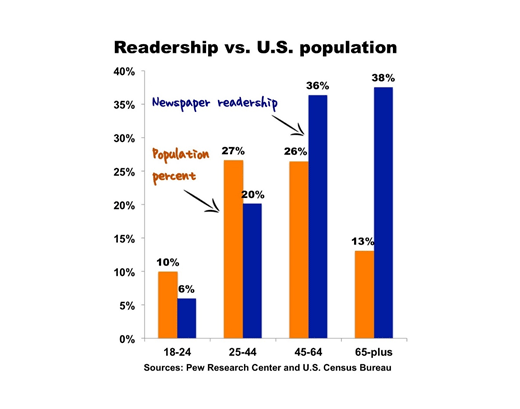
News readership statistics for the U.S. population
As a matter of fact, press releases are branding and credibility tools, not SEO tools. They are a great way to get the word out and more effectively brand companies, products, and services.
If a release is engaging enough, it can generate social signals, drive shares, direct targeted and organic traffic, and create journalistic interest abroad. All of this is in addition to the sweet maraschino cherry on top – the possibility of major media coverage.
To get all of these lovely amenities wrapped up with a big, red bow on top, you’ll have to play by the rules.
A press release lets you spread the word about your company and its offerings in an ethical, journalistic-manner that focuses on newsworthiness and branding over SEO, social media, or anything else. The simple tenets of who, what, where, why, and when apply (the five Ws).
To make it work, you’ll need to follow these 12 unbreakable rules for obtaining publicity.
Rule No. 1: Know How to Write a Press Release
If you have never written a press release, consider using a professional content writer or service. Press releases are about telling a story; your story. Writing from a journalistic approach takes years of studying and practice. That’s not to say that any good writer isn’t capable of doing it; it’s just that you want to be as knowledgeable as a professional or hire one.
Press releases must cover something newsworthy. A PR Daily article outlines six necessary AP style guide steps for composing your release to assure that it’s newsworthy.
They include: stating your objective clearly, use the five Ws, minding your spacing, using proper grammar and style, and sharing names and titles correctly and appropriately.
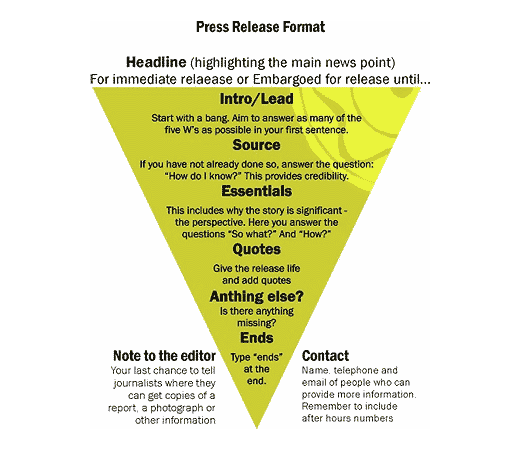
The proper format for writing an effective press release
Rule No. 2: Know Your Audience
Writing for your audience is critical when producing any piece of content. A bit of demographical and customer research will go a long way toward achieving this goal.
For example, if your target market consists of the 45-and-over age group, using modern terms that don’t appeal to them won’t do much to help you gain traction. Understand your audience and who you are writing for before you craft your newsworthy release.
Rule No. 3: Understand Targeting
All releases are targeted when you set them up to go out for distribution. Proper targeting can mean the difference between thousands of reads and plenty of traffic streaming back to your money website or the lack thereof.
Be sure you research every industry your company, products, or services apply to before setting your industry targets pre-distribution.
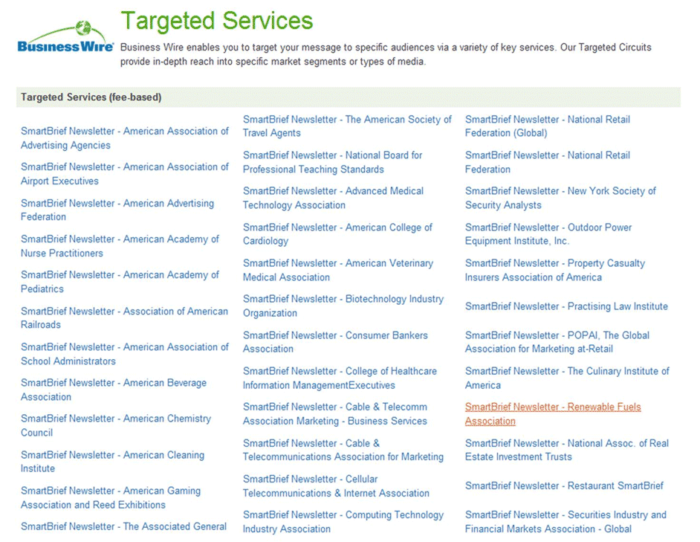
Industry targeting options for distributing your press release
Rule No. 4: Craft a Punchy Elevator Pitch
Remember that press releases are a major form of branding, which is exponentially vital in today’s online marketing world. SEO today is often more about branding and engaging content than just getting backlinks.
The best way to write a classy elevator pitch with viral potential is to make sure you know your brand, understand your market and have a deep understanding of the competitive edge you have to offer.
Still, you’ll also want to add some spice, bravado, and swagger to your headline to capture more attention.
A stagnant headline may be newsworthy, but that doesn’t mean it’s not making people pull their hair out when they read it. Read more on these in an article by TechCrunch.
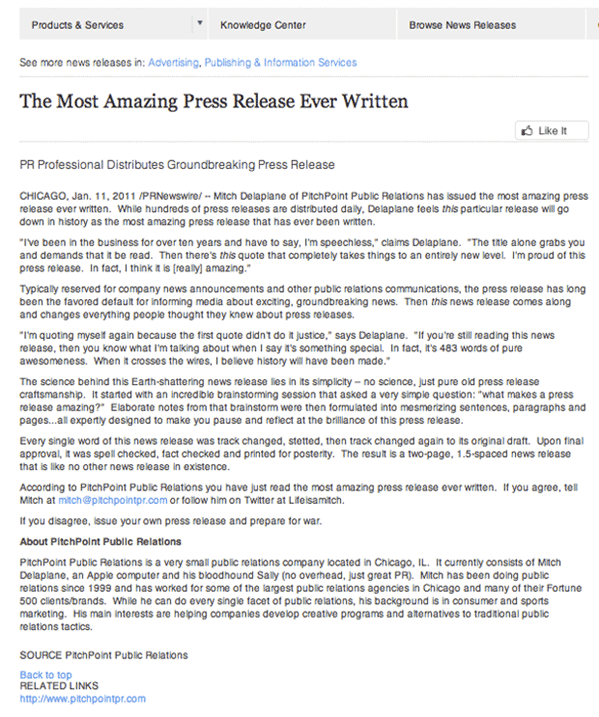
An example of the most amazing press release ever written.
How to Write Bad PR Titles
Let’s say you own a software company that is releasing its next version with a much-anticipated update that users have begged for the past few years.
You could propose a boring title like: “XYZ Software Company Announces Newest Version of XYZ Pro.” This title certainly is newsworthy. It’s definitely going to get approved by the editors. But the problem is that it’s boring. It does nothing to engage the reader.
How to Create Good PR Titles
Try to be more creative. Revamp the title above to make it punchier, catchier, and more engaging. For instance: “Almost Human: XYZ Pro Takes Thinking Out of Doing; New Update Adds Human-Response Feature to Interface.”
Rule No. 5: Abide by the Editing Process
Editors at press release distribution services, newspapers, and online news websites are stringent. Keep in mind that they are usually fervent studiers of the English language, AP style, tone, and prose. They don’t see any wiggle room in proper grammar or adherence to style; they see only black and white with no spatial gray area in between.
A Community Tool Box publication offers some tips on avoiding press release rejection by using proper grammar, spelling, titles, style, and prose. Remember, editors won’t fix your document for you; that’s on you. They might make minor changes.
However, if your release is not almost picture-perfect, it will go in the rejection pile with all of the other shoddily composed (and promptly rejected) news releases that editors get bombarded with day after day.
Read this article by the Torontoist to find out what editors – like the one at the Star, mentioned in the article – do when they are over-inundated with error-prone articles and news releases.
Rule No. 6: Collaborate to Succeed
Teamwork goes far in helping to develop an effective press release. Collaboration is how some of the finest marketing pieces are created.
So why limit the idea of the piece and its composition to just your ideas? Instead, brainstorm with a few others and co-create and co-write the piece together. This will improve clarity and can drastically enhance the quality of your press release.
Rule No. 7: Cross-Promote to Gain Credibility
Cross promoting is often called free advertising, which is exactly how the Edward Lowe Foundation references it. Cross promoting can help your information spread across multiple platforms quickly.
But, there are three inherent rules of cross-promotion: cost, control, and credibility.
Finding a cross-promotion partner is easy if you already do business with them. Imagine splitting the cost of the press release distribution and syndication with a brand that improves your overall branding and reach.
Reaching out to a few business partners may be you need to find a cross-promotion partner for your next PR campaign.
Rule No. 8: Use Quality Distribution Channels
Cheap distribution is not good, and good distribution is not cheap. Distribution costs money, plain and simple.
There’s a lot of squabble online about which press release distribution service is the best. Speaking from personal experience, there is only a handful worth using.
I’ve nailed Wall Street Journal time and time again using Berkshire Hathaway’s Business Wire, but it costs $400 or more for a release with a 400-word limit. (They charge you for every 100 words after that.) You’ll also pay a pretty penny to add photos, videos, social media signals, and so forth.
Marketwire gets decent traction and features an awesome dashboard with good analytics. PR Web is the most profitable of all distribution services but still charges nearly as much for tier-one distribution as the other services.
As for add-ons, you get more bang for your buck on PR Web because you can add videos, images, and hyperlinks for free. Other services to consider include: PR Newswire, B Wire, and 1888PressReleases.
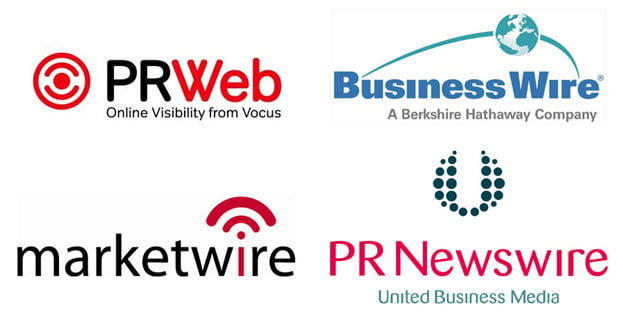
Distribution services provide varying degrees of options for your press release.
Rule No. 9: Syndicate Post-Distribution
Syndicating your press release is crucial. Sure, it’s going out to all of these places. But, if you don’t take some additional “traction-action” yourself, you could be wasting your own time and money.
Ensure that your social channels are all set up to syndicate your press release. That means Facebook, Twitter, YouTube, LinkedIn, Reddit, Pinterest, Instagram, Snapchat, etc. When syndicating your press release, you will want to access the dashboard and find different major mediums that it was posted to for distribution. Use a different medium for each social channel syndication. For example:
- I watch as my PR goes out around the world. Once it hits major portals like the Boston Globe, the Sacramento Bee, or the Houston Chronicle, I take those hyperlinks and use a different one with a unique description for each social channel I syndicate on.
- I post my Boston Globe clipping on Facebook and say something like: “Boston Globe Covers XYZ Software Release in Feature Publication.”
- Then I take the Houston Chronicle listing and send that out on Twitter using a unique description, and so on.
- Rinse and repeat. Don’t worry about trying to get social traffic back to your website. Rather, focus on branding and creating viable credibility and increased social signals that ultimately do wonders for your website.
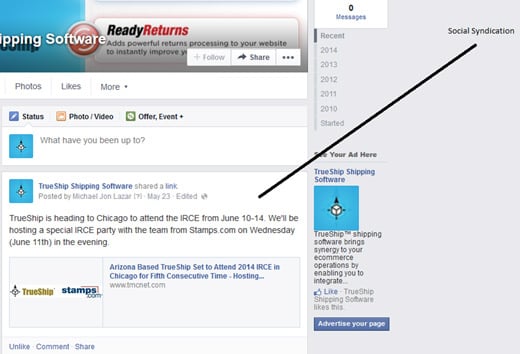
Syndicate your press release post-distribution through your social channels
Rule No. 10: Gain Social Traction
There’s only one service I’d recommend for your press release’s syndication on social channels, and that service is Pitch Engine. This is a social branding and marketing distribution service that you piggyback with your press release.
It allows you to track social analytics and traction as you gain more headway. You’ll want to write a unique copy of the actual release for Pitch Engine to gain even more traction.
When you do syndicate your actual release on social media (as explained above), consider boosting those posts to spread brand awareness, garner more social signals, and create chatter.
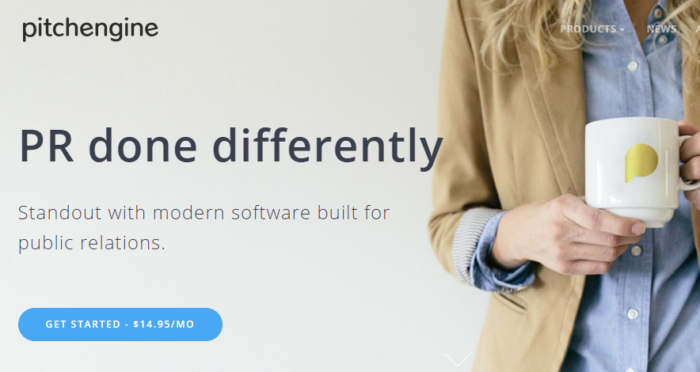
Rule No. 11: Repost with Content Discretion
Avoid reposting the actual press release on your website because this can denigrate your content authenticity and page-score ranking with Google and the other search engines.
Instead, write a unique teaser paragraph or two, then link it to the release on the host site that distributed it or one of the major media outlets that picked it up.
This greatly enhances credibility with your site visitors because they see that you were just covered in the New York Times (and they can read your full release on that portal instead of reading it on your site). Imagine how that makes them feel about your brand.
Rule No. 12: Enhance Your Release with SEO and Pictures
Most press release distribution services offer a few very worthwhile add-ons. The first is the SEO enhancement feature. By all means, opt for do-follow links. A few more high PR backlinks will never hurt your website.
Consider expanded distribution to hit more sites, albeit at an increased cost. For example, if you are a multinational company, consider worldwide distribution with AP Newswire syndication.
If you are a domestic company, target national regions to hit every major news medium in the U.S. instead of the limited newsfeeds in your set geo-region.
Finally, pictures, videos, and sound files are worth a million words. Adding these multimedia elements to your press release helps gather more attention, improves social media reach, and drives brand awareness.
Ultimately, the future of your public relations – and your brand’s reputation – is in your hands. Make the most of it.
Has your company had success with press releases? Share your experiences below!
source http://feedproxy.google.com/~r/KISSmetrics/~3/ZAXRLr6VAI8/
No comments:
Post a Comment